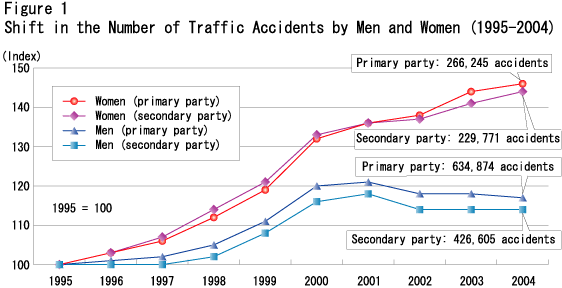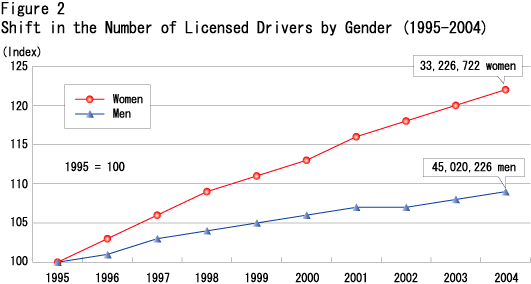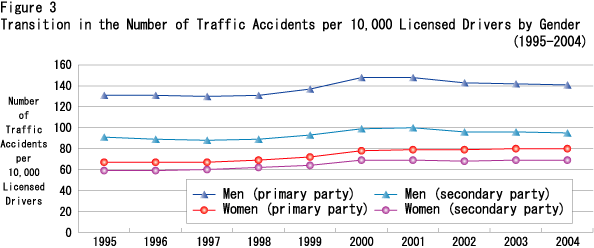
|
Figure 1 shows the annual shift in the number of traffic accidents from 1995 through 2004 by gender and by primary/secondary party division. The figures are indices with the 1995 level set at 100. As indicated, the number of traffic accidents caused by women, whether they were the primary or secondary party, has increased by more than 40% over the past decade. The number of traffic accidents caused by men, on the other hand, peaked in 2001 and has leveled off since then.
In 2004, traffic accidents in which women were the primary or secondary party accounted for approximately 30% (496,016 accidents) of the total.
|
|
|

|
Figure 2 indicates the annual change in the number of licensed driver from 1995 through 2004 by gender, shown in indices of 100 in 1995. The number of female licensed drivers has increased 22% over the past decade. It is apparent from the graph that the growth rate is considerably higher for women than that for men.
In 2004, about 33,230,000 women and 45,020,000 men had a driver's license, with women accounting for roughly 40%.
|
|
|

|
Figure 3 indicates the shift in the number of traffic accidents per 10,000 licensed drivers, by gender and by primary/secondary party.
While the growth rate in the number of accidents (Figure 1) and that of licensed drivers (Figure 2) is higher for women than men, the number of accidents per 10,000 female licensed drivers shows a different trend: it is roughly half that of male drivers. In 2004, accidents per 10,000 male drivers in which men were the primary party totaled 140, whereas women's traffic accidents per 10,000 female drivers numbered 80. In view of annual change, there is little diversity between genders.
|
|
|

|
|
UP
Next
|
